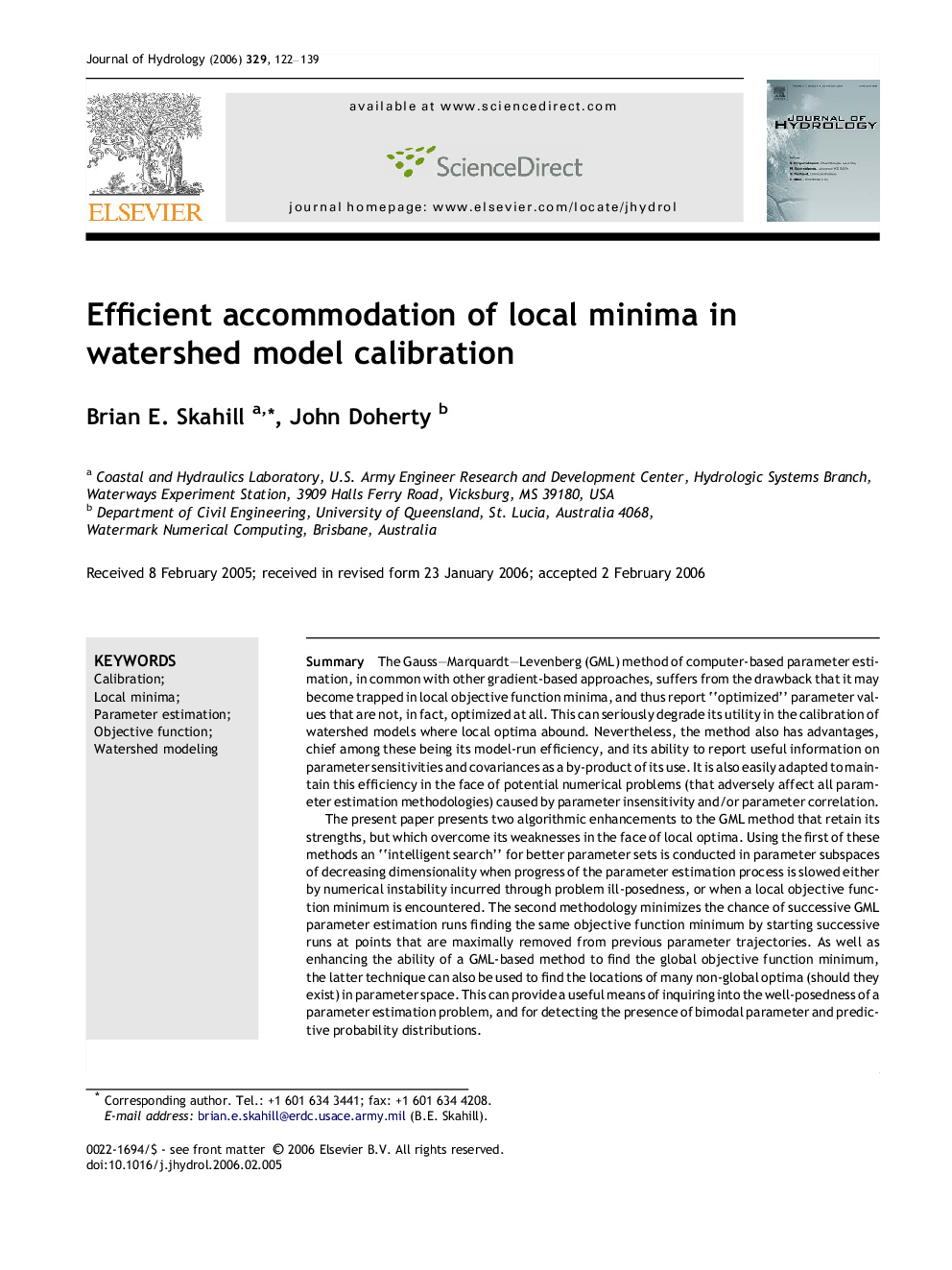| Article ID | Journal | Published Year | Pages | File Type |
|---|---|---|---|---|
| 4580228 | Journal of Hydrology | 2006 | 18 Pages |
SummaryThe Gauss–Marquardt–Levenberg (GML) method of computer-based parameter estimation, in common with other gradient-based approaches, suffers from the drawback that it may become trapped in local objective function minima, and thus report “optimized” parameter values that are not, in fact, optimized at all. This can seriously degrade its utility in the calibration of watershed models where local optima abound. Nevertheless, the method also has advantages, chief among these being its model-run efficiency, and its ability to report useful information on parameter sensitivities and covariances as a by-product of its use. It is also easily adapted to maintain this efficiency in the face of potential numerical problems (that adversely affect all parameter estimation methodologies) caused by parameter insensitivity and/or parameter correlation.The present paper presents two algorithmic enhancements to the GML method that retain its strengths, but which overcome its weaknesses in the face of local optima. Using the first of these methods an “intelligent search” for better parameter sets is conducted in parameter subspaces of decreasing dimensionality when progress of the parameter estimation process is slowed either by numerical instability incurred through problem ill-posedness, or when a local objective function minimum is encountered. The second methodology minimizes the chance of successive GML parameter estimation runs finding the same objective function minimum by starting successive runs at points that are maximally removed from previous parameter trajectories. As well as enhancing the ability of a GML-based method to find the global objective function minimum, the latter technique can also be used to find the locations of many non-global optima (should they exist) in parameter space. This can provide a useful means of inquiring into the well-posedness of a parameter estimation problem, and for detecting the presence of bimodal parameter and predictive probability distributions.The new methodologies are demonstrated by calibrating a Hydrological Simulation Program-FORTRAN (HSPF) model against a time series of daily flows. Comparison with the SCE-UA method in this calibration context demonstrates a high level of comparative model run efficiency for the new method.
